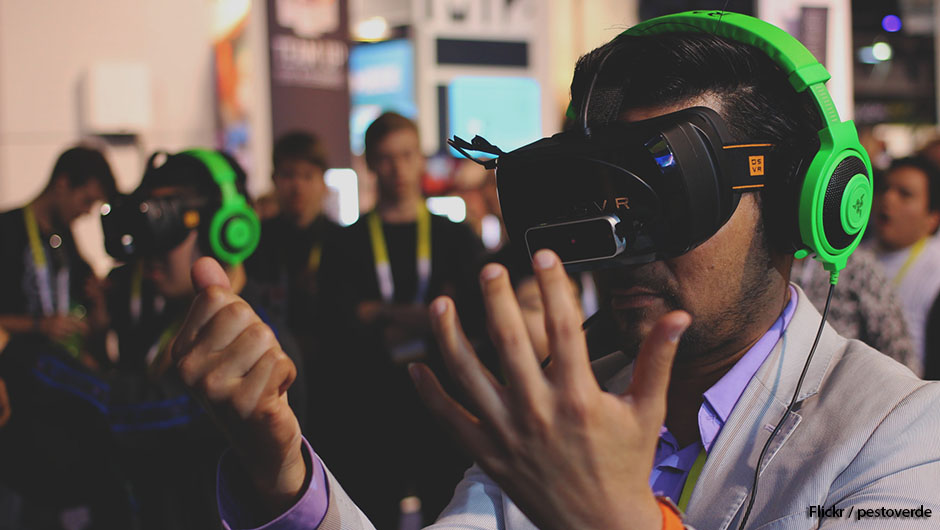Augmented, virtual, mixed…there are more realities than we can count. Lately, there has been a lot of buzz around virtual reality, as it’s easily making its way to the masses, while augmented reality is still something a lot of people have no idea about. Even though, most likely, they’ve tried it without knowing it. How, by trying Snapchat filters and playing Pokemon Go, of course!
Still, even though some may be aware of about the existence of these two concepts, they can’t tell the exact differences between them. If you’re among them, you’re in the right place, because in today’s clash we have augmented reality vs virtual reality.
I will be trying to explain the principles of each concept, the technology behind them, and, of course, give a few example to illustrate everything better.
What is augmented reality?
According to Wikipedia, augmented reality is a live, direct or indirect view of a physical, real-world environment whose elements are “augmented” by computer-generated perceptual information, ideally across multiple sensory modalities, including visual, auditory, haptic, somatosensory, and olfactory.
Or, if you prefer a simpler approach, it’s a technology that layers computer-generated visuals on what you’re seeing, using a smartphone, tablet or a special payer of goggles. In most cases, you can even interact with the visuals.
As mentioned above, Snapchat filters are the best example, while their newest lenses effects can explain even better. This is what I’m talking about:
Of course, this is just for fun, while augmented reality can be used for more…serious stuff. The best example, in this case, is Microsoft’s Holo Lens, which is an absolutely amazing project, making full use of AR.
This video will explain how it works:
What are the purposes of augmented reality?
There are several companies which are using augmented reality for various projects. Don’t tell me that it can be used for, you know, fun and games?
We’ve already covered this topic when we talked about the 10 augmented reality companies that will dominate the market.
Ok, I hope that things are clear, so let’s talk about the other opponent in the augmented reality vs virtual reality clash.
What is virtual reality?
Wikipedia says that virtual reality is a computer-generated scenario that simulates a realistic experience. The immersive environment can be similar to the real world in order to create a lifelike experience grounded in reality or sci-fi.
In order to make this simpler to understand, it’s a game-like world, generated by a computer or a smartphone, which can be observed while using a headset, equipped with a set of lens and specific technology.
After Google released its Cardboard headset, it became accessible to the masses, so this technology is now widely available. Obviously, there is a high interest in VR gaming for it now and we’ll use this in order to show you how it works.
We’ll take Paranormal Activity, one of the best VR horror games for HTC Vive, as an example.
As you can see in the video, the players have the VR headset on their heads, as well as a pair of controllers in hands. In the lower right corner of the video, it’s what the headset projects and they are seeing. The imagery can be controlled with head movements, while the hands in the game are simulations of their actual hands. Not all headsets come with handheld controllers though, as these are additional accessories the HTC Vive has.
What are the purposes of virtual reality?
Besides gaming, which is obviously the main use of virtual reality, there are actually several ways in which this technology can be used.
There are virtual reality simulators, for example, which can be used for training pilots, drivers, military personnel, or even surgeons. And this, if you ask me, is just the beginning, as this technology has way more potential, yet to be discovered.
What are the resemblances between augmented reality and virtual reality?
First of all, augmented reality vs virtual reality shouldn’t actually be a clash, since these two concepts aren’t competing.
They are leveraging some of the same types of technology, not to mention that their main purpose is to entertain the user. Additionally, they have the same great potential in changing the landscape of many fields, like science or medicine.
What are the differences between augmented reality and virtual reality?
Technically speaking, virtual reality generates complete new worlds, while augmented reality just adds virtual elements to the real world. Also, VR can be enjoyed just with a headset, while for AR you can use just a mobile device, without any other accessories.
And this wraps it up, folks. Hopefully, our augmented reality vs virtual reality guide will answer all your questions about these two technologies. Still, if you have any other questions, feel free to ask, using the comments section below!

